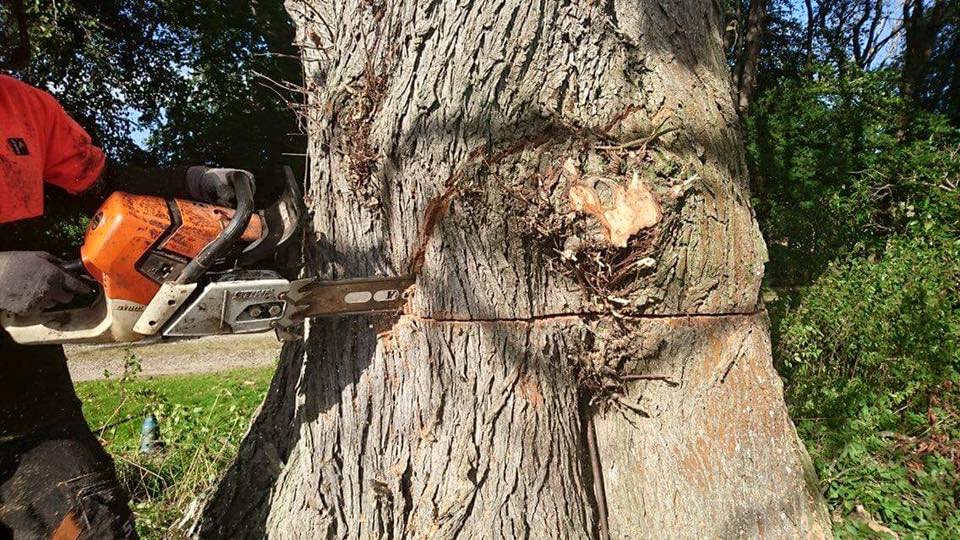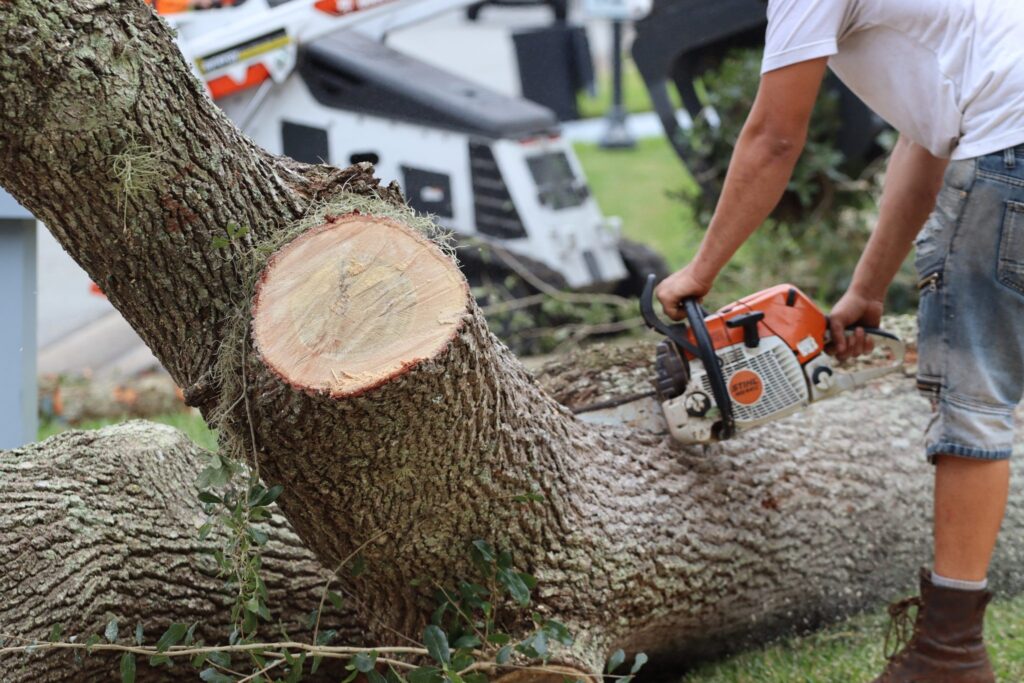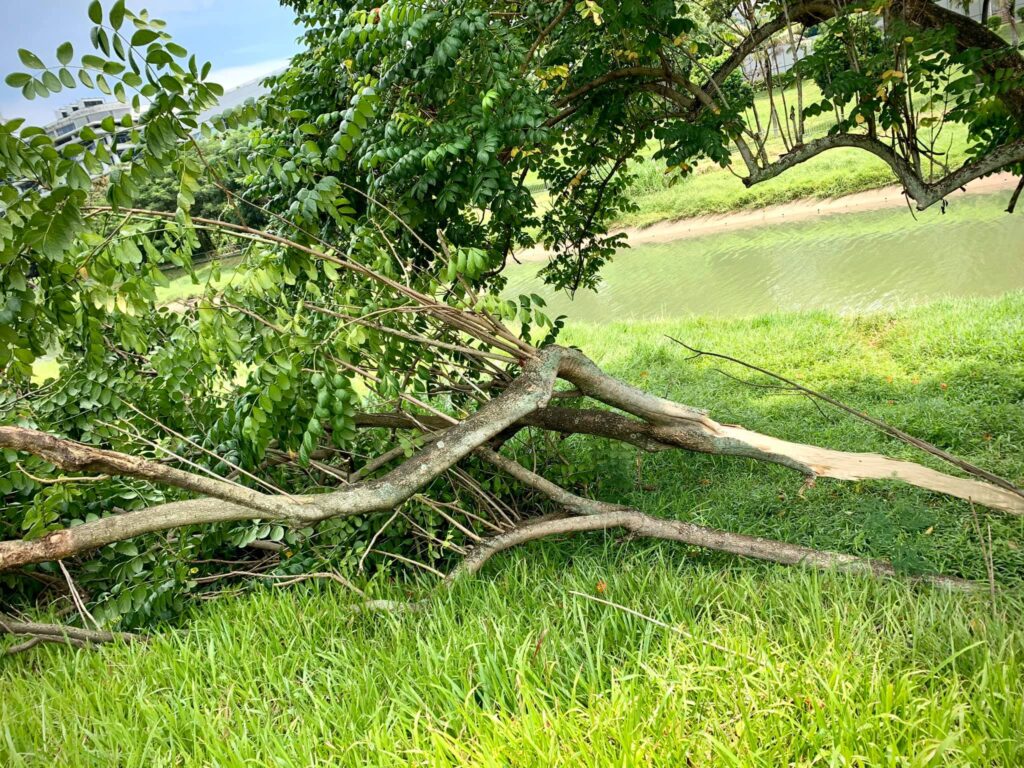
Today, ‘we’re going to talk about some signs a property owner can use to determine if a tree might be in imminent danger. A tree could be ready to fall and cause a lot of damage.
It’s leaning
Trees which are leaning are fine–sometimes. It depends on why they lean and if ‘it’s new or not. If a tree leans because it has an uneven canopy, it is possible that judicious pruning by an excellent tree service can restore it to safety. But, if the trunk is leaning at the base and has a lifted root plate or a root plate failure, the roots are damaged, and the tree ‘can’t be ”replanted” or righted with much success.
Small (<4″) diameter trees can be stake if they are leaning. Smaller trees in soft soil which can be compacted before a lifted root plate might be saved.
Dead or dropping branches
A tree which drops branches or which has dead branches
A tree that is shedding branches is the arboreal equivalent of a person who is losing weight. It ‘doesn’t happen without reason. ‘It’s quite worrisome because the branches can drop randomly.
Damaged bark
Damaged bark includes cracks, fissures, cankers (missing bark), or inclusions. A branch which has broken off can create a wound which can rot from the inside of the trunk like a bad tooth. While this ‘doesn’t always happen, for example, if the tree is very healthy, it’s a worthy concern.
Poor branch growth
Branches which grow in a V-shape, cluster or crowd each other are weak branches. They have a propensity for breaking off during windy days. Large branches which grow directly over a structure such as a house, or too close to the roof bear close watching for signs of trouble.
Root damage
Without digging up the tree and examining the roots, there are a few ways to tell if tree roots have failed the tree. The first is a tree which refuses to grow normally regardless of how well the rest of the plant material thrives in the area. The tree was likely as not root bound, and a stiff wind will eventually blow it over.
The second is root rot, which may be indicated by fungal growth on the trunk, mushrooms around the base of the tree. Of course, digging it up will also show the rot.
If a homeowner thinks a tree has one or more warning signs, it’s best to call an expert tree company to manage it before it becomes a fiasco.

